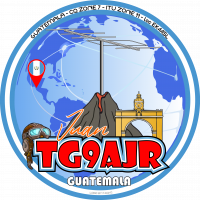SmartSDR v4.1.3 and the SmartSDR v4.1.3 Release Notes
SmartSDR v3.10.15 and the SmartSDR v3.10.15 Release Notes
The latest 4O3A Genius Product Software and Firmware
Need technical support from FlexRadio? It's as simple as Creating a HelpDesk ticket.
SmartSDR AGC-T Adjustment Procedure

Hello, what is the proper way to adjust the AGC-T specially for DIG ?
- Volume to about 60 / FAST / AGC slide from top to bottom until noise decrease.
- Volume to about 60 / FAST / ACG slide from bottom to top until noise increase.
So far I had been using option 1.
I just tried both options and the result in different in AGC number.
Comments
-
I use option 2 so that there is no or minimal age action to confuse the setting, which is contrary to the flex engineering suggestions. I adjust upward until the desired signal just rises above the noise.
0 -
I don’t think the standard Flex advice for adjusting AGC by turning AGC up or down and listening to receive audio works well for FT8.
If you check the WSJT-X online user guide (https://wsjt.sourceforge.io/wsjtx-doc/wsjtx-main-2.6.0.html#TRANSCEIVER) you will read, “Use the receiver gain controls and/or the computer’s audio mixer controls to set the background noise level (scale at lower left of main window) to around 30 dB when no signals are present.” I use the Flex AGC control to accomplish this after first tuning to an empty part of spectrum, such as 7.070 instead of the usual 7.074 for 40m.
This gives me a WSJT-X waterfall that looks like this:
For my station this morning, this was achieved with an AGC setting of 1.
Thereafter, when I operate FT8, I adjust my Flex AGC so that I have a similar background color between signals on the WSJT-X waterfall. Here is my 80m waterfall, captured just a few minutes after the 40m waterfall above. My Flex AGC was set to 14 at the time and the WSJT-X background noise level scale drops to 30 dB during the ~2 second interval between FT8 even/odd transmit cycles.
So, in summary, for FT8, I adjust AGC by reading the WSJT-X background noise scale and visually observing the color of the WSJT-X waterfall between the various FT8 signals, NOT by listening to the Flex receiver audio. And, I don't find it worthwhile to try and fine tune the setting. For my 80m spectrum above, an AFC setting of 12 or 16 would probably have been just as satisfactory.
Other variables that might come into play are the RX Gain setting you use for SSDR DAX (mine is always set at 74 and I never change it) and settings that are part of Windows audio.
Tim K9WX
0 -
We always urge you to experiment.
In the WSJTx documentation, that is for a typical SuperHet radio design since you often do not have the same dynamic range on a superhet radio and this is why turning off the AGC is mostly recommended. On a superhet radio very strong signals will **** weak signals as the gain of the front end is reduced automatically.
However, it changes with a Direct Sampling radio and an FPGA that gives you a much much better dynamic range. This is why you can often copy FT8 signals that are only 100hz apart where one is +15 and the other is -20.
Tim, who is trained on the internals of the radio and what really happens under the covers talks about it in a few videos, and this is one of them.
About the worst thing you can do is set the AGC-T too high. It will start to reduce the SNR of your receiver.
2
Leave a Comment
Categories
- All Categories
- 375 Community Topics
- 2.1K New Ideas
- 629 The Flea Market
- 8.2K Software
- 105 SmartSDR+
- 6.4K SmartSDR for Windows
- 183 SmartSDR for Maestro and M models
- 425 SmartSDR for Mac
- 271 SmartSDR for iOS
- 255 SmartSDR CAT
- 190 DAX
- 381 SmartSDR API
- 9.3K Radios and Accessories
- 36 Aurora
- 250 FLEX-8000 Signature Series
- 7.2K FLEX-6000 Signature Series
- 941 Maestro
- 55 FlexControl
- 864 FLEX Series (Legacy) Radios
- 917 Genius Products
- 460 Power Genius XL Amplifier
- 334 Tuner Genius XL
- 123 Antenna Genius
- 294 Shack Infrastructure
- 206 Networking
- 453 Remote Operation (SmartLink)
- 144 Contesting
- 784 Peripherals & Station Integration
- 139 Amateur Radio Interests
- 1K Third-Party Software





